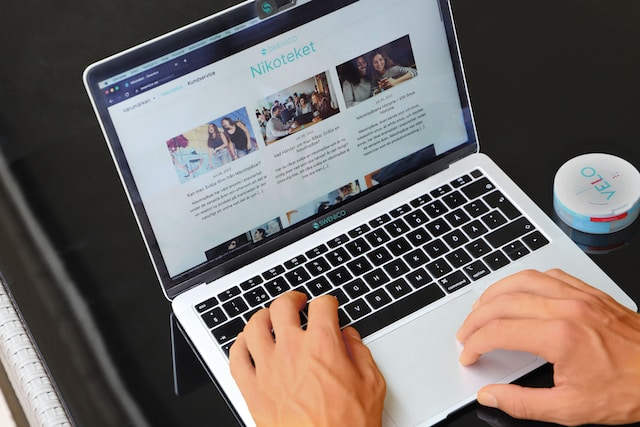Programmatic Advertising: The Future of Digital Media?

If you’re in the digital marketing sphere, you’ve probably heard the term “programmatic advertising” bandied about. But if you’re still scratching your head trying to figure out just what it means, you’re certainly not alone. In this article, we’ll break down the concept of programmatic advertising, showing you what it really is, how it works, and why it’s becoming the future of digital media advertising.
“Programmatic advertising might sound complicated, but it’s simply the use of software to buy digital advertising, making the process quicker, more efficient, and more precise.”
It might sound like a buzzword, but programmatic advertising is more than just jargon – it has the potential to revolutionize the world of digital advertising. We’re here to guide you through its benefits and how it could transform the future of digital media advertising. Buckle up for an informative journey!
Table of Contents
Defining Programmatic Advertising: A Modern Digital Phenomenon
Programmatic advertising essentially leverages technology to automate and optimize the buying and selling of online ad space. It is the automation of digital advertising, which incorporates data insights and algorithms to serve ads to the right audience at the right time and the right place. Unlike the traditional method which involved human negotiations and manual insertion orders, this new-age method uses AI and machine learning to purchase digital ads in real time – a process that is both swift and scalable.
Programmatic advertising isn’t just restricted to a singular model. It encompasses other types of Programmatic media buying, such as Private Marketplace (PMP), Preferred deals, and Programmatic Direct. Each of these types serves different purposes for advertisers and publishers alike, based on their unique objectives and needs. Furthermore, ad exchanges and ad networks, which are similar to digital trading floors, facilitate the buying and selling of ad inventory, making the advertising game more dynamic and expansive than ever before.
Crucial to understanding programmatic advertising is the differentiation from Real-Time Bidding (RTB). Many assume that these terms are interchangeable, but they are not. While RTB does indeed fall under the umbrella of programmatic advertising, it represents just one category of programmatic buying. RTB is a particular process within programmatic advertising that involves instantaneous and automated auction of ad impressions. In essence, RTB is a way to transact media that allows an individual ad impression to be bid on in real-time, a second-by-second decision-making process.
As the future of digital advertising continues to evolve, a stronger understanding of programmatic advertising becomes increasingly vital. Not only can it revolutionize the way businesses approach advertising, but it also has the potential to significantly alter the advertising landscape as a whole.
Breaking Down the Mechanism: How Does Programmatic Advertising Work?
Let’s dive a little more deeply into the inner workings of programmatic advertising. In essence, it all starts when a user visits a website. If that site has programmatic ads on it, it instantly sends information about the user and the site to an ad exchange.
The ad exchange is a digital marketplace where advertisers, agencies, and publishers can buy and sell advertising spaces in real-time. This is where all the magic happens. Here, an instantaneous, high-speed auction takes place, also known as real-time bidding (RTB). Each impression is sold to the highest bidder. This entire process takes milliseconds, happening even before the page has fully loaded.
Through this process, marketers get to bid on precious ad inventory in real-time using their Demand-Side Platforms (DSPs), platforms that analyze bid requests and make instantaneous bids during the auction. Advertisers get the benefit of purchasing ad space tailored specifically for their audience, ensuring that their ads are seen by the right people at the right time.
However, there’s more to programmatic advertising than just real-time bidding. Other deal types include Private Marketplace (PMP) deals, Preferred deals, and Programmatic Guaranteed deals. These often involve direct negotiations between the buyer and seller, bypassing the auction model.
Programmatic advertising can be complex, but its sophistication is also its strength. Its ability to lean into data, automation, and real-time flexibility promises to revolutionize the advertising landscape, making every ad impression count.
Advantages of Programmatic Advertising: Why It’s a Game-Changer
Living up to its reputation as a game-changer, the benefits of programmatic advertising extend to both advertisers and publishers. For advertisers, the advantages are quite numerous including, but not limited to, enhanced efficiency, precise audience targeting, and financial control.
One of the significant attributes of programmatic advertising is Real-time Bidding (RTB). This facet allows the advertiser to set the price they’re willing to pay for their ads to be displayed to a particular audience. What makes RTB outstanding is the ability to modify your marketing strategies on the go. With the availability of bid forecasting tools, advertisers can make real-time adjustments, ensuring campaigns remain within budget. The ability to choose your target audience and decide the placement of your ads adds another level of control and precision, thereby enhancing Return on Investment (ROI).
For publishers, RTB provides an avenue to have control over the content displayed. They can ban sensitive ads and adjust prices based on demand, leading to a higher value for their unsold inventory. This attribute of RTB leads to the sales of premium inventory in private marketplaces, also known as Private Marketplace (PMP) deals. Here, inventory is sold directly and privately to select advertisers at a negotiated price, giving assurance that ads are relevant to the audience.
Programmatic advertising offers myriad buying methods. Beyond RTB and PMP, other techniques include Preferred deals and Programmatic direct. Preferred deals allow an advertiser to have first look and refusal rights on a publisher’s inventory at a fixed price before it goes to the open auction, with Programmatic direct preferring a non-auction model where ad space is sold directly to advertisers for a negotiated price.
Ad Exchanges and Ad Networks serve as the backbone of the programmatic media buying process. They enable advertisers, agencies, and publishers to buy and sell ad inventory. The interactions within these platforms depend on the industry, brand, product awareness, needs, campaign objectives, and marketing budget.
As programmatic advertising gains traction, its inherent advantages are lighting the path towards a new era in digital media. Beyond the confines of traditional methods, it offers a promising future of smarter ad buys, precision marketing, and greater control for publishers and advertisers alike. Its ability to seamlessly adapt to real-time market shifts is what makes it a digital advertising marvel.
Read more: The Secret of Video in Digital Advertising
Reference: https://grapeseedmedia.com/blog/ai-in-programmatic-advertising/




